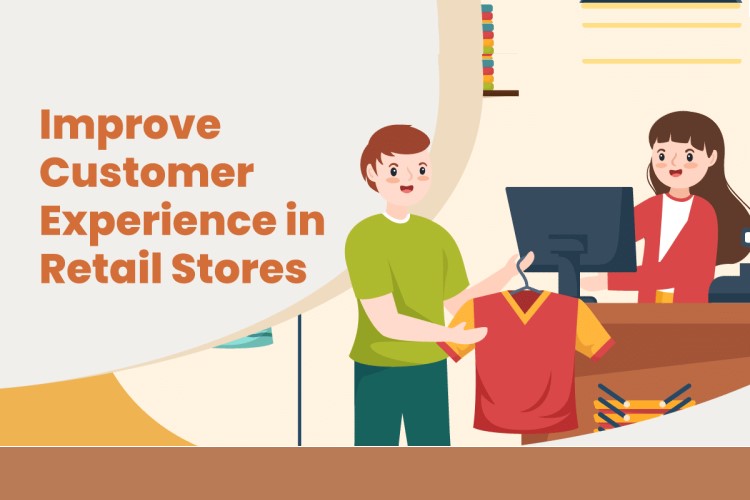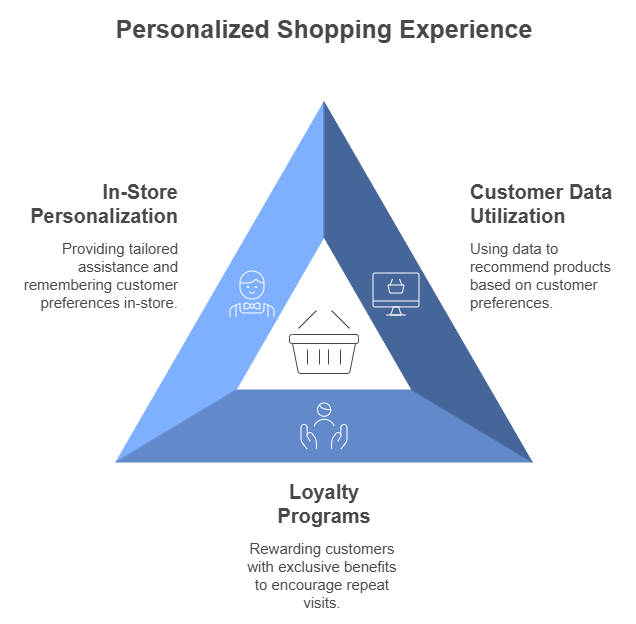
Understanding Customer Expectations in Retail
Understanding customer expectations in retail is key to improving retail customer experience. Customers want more than just products; they value personalized service that meets their unique preferences. When you personalize the shopping experience, you show customers that you understand and appreciate their individual needs. Personalized recommendations, loyalty programs, and targeted promotions can create a deeper connection with shoppers, leading to stronger brand loyalty.
Convenience is also high on customers’ priority lists. They expect a seamless experience that allows them to shop when and how they want, whether online or in-store. For instance, many customers appreciate options like curbside pickup, same-day delivery, and easy returns. By simplifying these processes, you make it easier for them to choose your store over competitors.
Finally, shoppers value a unified shopping experience across channels. Customers want to switch between online and in-store shopping without disruptions or inconsistencies. Offering features like in-store pickup for online orders or a mobile-friendly website ensures a seamless experience. Meeting these expectations not only improves customer satisfaction but also sets your brand apart. By focusing on personalized service, convenience, and seamless transitions, you make strides toward improving retail customer experience and building long-term customer loyalty.
Optimizing Store Layout and Design
Optimizing store layout and design is an essential step in improving retail customer experience. Strategic design choices can enhance how customers feel and navigate through your space. When you create a layout that flows naturally, you make it easier for shoppers to find what they need and encourage them to explore more. Placing popular or high-demand items toward the back of the store, for example, encourages customers to browse other sections along the way.
Clear signage is also important in guiding customers effectively. Signs that clearly indicate sections, special promotions, or store amenities create a smoother shopping experience. When signage is easy to read and strategically placed, customers spend less time searching and more time engaging with your products. This small but effective feature reduces frustration and adds a sense of order to the shopping environment.
A well-thought-out design also enhances the atmosphere of your store, making it more inviting. Lighting, decor, and spacing all contribute to the overall customer experience. With these elements in place, you create a comfortable setting that invites customers to stay longer and explore further. By focusing on layout, signage, and ambiance, you take an important step toward improving retail customer experience, helping customers feel welcome and valued as they shop.
Personalizing the Shopping Experience
Personalizing the shopping experience is a powerful way of improving retail customer experience. When you tailor interactions to individual preferences, customers feel valued and understood. One effective approach is using customer data to recommend products based on previous purchases or browsing behavior. By showing items relevant to each shopper’s tastes, you make their shopping journey smoother and more satisfying.
Loyalty programs are another excellent tool for creating a personalized experience. Rewarding frequent shoppers with exclusive discounts, early access to sales, or special events builds a stronger connection to your brand. It also encourages repeat visits, as customers know they’ll receive benefits tailored to their loyalty. Offering points or perks that align with their preferences can further enhance this connection and increase engagement.
Personalization can also extend to in-store experiences, such as offering tailored assistance or remembering customer preferences. For example, sales associates who access purchase histories can provide recommendations that align with the customer’s style or needs. When customers feel recognized and valued, they are more likely to return. By focusing on personalized recommendations and loyalty programs, you enhance customer satisfaction and foster lasting relationships, which are essential for improving retail customer experience.
Integrating Technology to Enhance Experience
Integrating technology into retail is a valuable way of improving retail customer experience, especially for tech-savvy shoppers. Mobile apps, for instance, can streamline the shopping process by allowing customers to browse, make purchases, or check inventory from anywhere. With mobile apps, you provide convenience that aligns with a fast-paced lifestyle, giving customers more control over their shopping experience.
Self-checkout stations are another technological feature that simplifies shopping. Many customers prefer the speed and privacy of scanning and paying for items independently. By reducing wait times and empowering shoppers, self-checkout technology enhances their overall experience and keeps traffic moving smoothly, especially during peak hours. When customers have options, they feel more engaged and satisfied with the store’s flexibility.
Augmented reality (AR) offers a unique way to elevate in-store and online shopping. With AR, customers can virtually try on products, such as clothing or home decor, before they buy. This feature allows shoppers to make more confident decisions, reducing return rates and increasing satisfaction. By leveraging technology like apps, self-checkout, and AR, you create an experience that resonates with modern shoppers, ultimately improving retail customer experience and boosting loyalty.
Training Staff for Excellent Customer Service
Training staff for excellent customer service is key to improving retail customer experience. Well-trained employees who understand your products and services can provide accurate information and helpful recommendations. This knowledge makes customers feel more confident in their purchases, increasing satisfaction and trust. When employees are well-informed, they can address customer questions quickly and effectively, which enhances the overall shopping experience.
Approachability is another important element of good customer service. Employees who greet customers warmly and are attentive to their needs create a welcoming environment. Friendly interactions encourage customers to ask questions or seek help, making their shopping experience smoother and more enjoyable. Staff members who are approachable and empathetic can handle various customer concerns, turning potential frustrations into positive experiences.
Training also prepares employees to manage difficult situations calmly and professionally. Confident staff members who know how to resolve issues efficiently contribute to a positive store atmosphere. By investing in training, you equip your team with the skills needed to deliver excellent customer service. This focus on customer care builds loyalty and plays a vital role in improving retail customer experience.
Collecting and Acting on Customer Feedback
Collecting and acting on customer feedback is a valuable approach to improving retail customer experience. One effective method for gathering feedback is through surveys. Simple, quick surveys at checkout or via email allow customers to share their thoughts. These surveys can focus on specific areas, like product availability or service quality, giving you targeted insights for improvement.
In-store comment boxes and online reviews also provide useful information. When customers leave feedback in their own words, you gain a deeper understanding of their experiences and preferences. Social media channels offer another way to listen to customers. Many shoppers share their opinions on social media, where you can monitor trends and respond in real-time. By being present on these platforms, you make it easier for customers to connect with your brand.
Using customer insights to guide improvements shows customers that you value their input. For example, if customers suggest shorter checkout times, you might consider adding self-checkout options. When you make adjustments based on feedback, customers feel heard, which increases loyalty. Over time, collecting and acting on customer feedback enables you to adapt the retail experience to changing needs, ensuring your store remains responsive and relevant. This ongoing adaptation is essential to improving retail customer experience and building lasting customer relationships.
Conclusion
Improving retail customer experience requires a thoughtful approach that blends design, technology, personalized service, and attentive staff. By understanding customer expectations and continually seeking their feedback, you build a foundation for lasting relationships. Well-trained employees and strategic use of technology further enhance this experience, making your store a welcoming and efficient space. Each of these steps contributes to creating an environment where customers feel valued and understood. As you focus on improving retail customer experience, you strengthen customer loyalty and position your business for sustainable growth.


